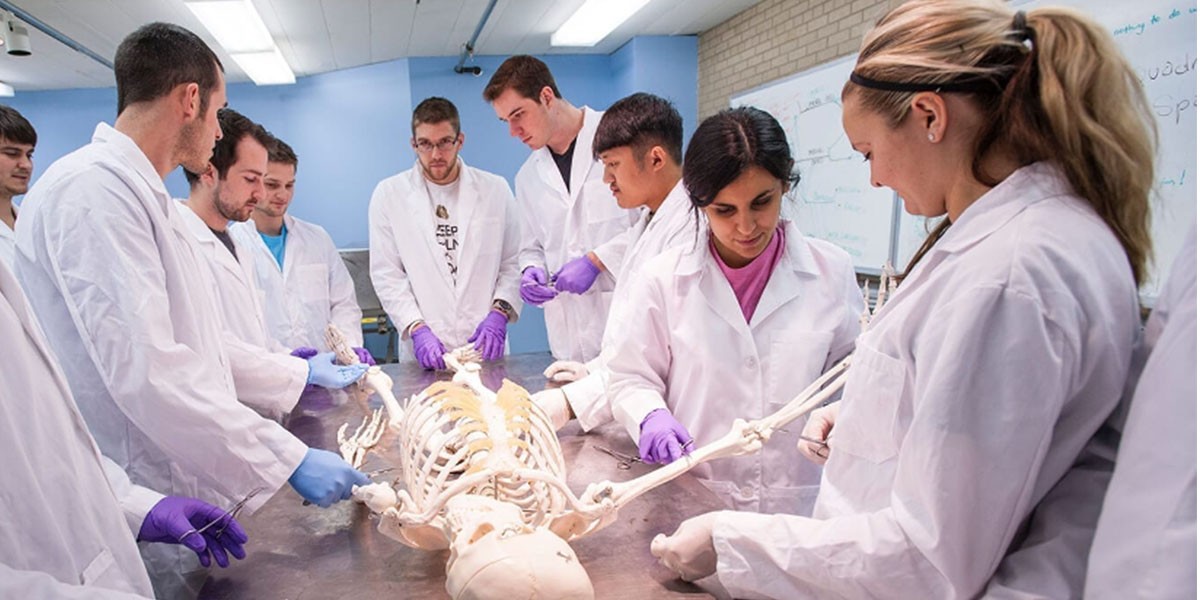Information on this page is for general guidance only. Admission and licensure requirements vary and may change; students must verify details with relevant schools or licensing bodies. Strong performance in related coursework and extracurricular experiences will help strengthen your preparation.

Chiropractors believe that these imbalances affect general health via the nervous system, and while they have some similarities to primary care providers, they are recognized as a medical specialty, using manual manipulation, health and lifestyle counseling, and other skills to facilitate optimal wellness. A Doctor of Chiropractic Degree program will prepare graduates to serve the healthcare community as Chiropractic practitioner, educator, researcher, administrator, whether with a fitness facility, sports team, and hospital or in general practice. A Chiropractic school focuses on teaching to diagnosis and treat mechanical disorders of the musculoskeletal system, especially the spine. The Doctor of Chiropractic Degree programs can be focused on a curriculum in basic sciences, chiropractic technique, chiropractic philosophy, business management, and will be evaluated to demonstrate clinical competency.
ACCORDING TO A NATIONAL BOARD OF CHIROPRACTIC EXAMINERS SURVEY:
- The typical chiropractor spends between 30-40 hours per week involved in practice.
- More than half of the respondents have been in practice at least 15 years with a significant amount of job satisfaction.
- The ratio of men to women in practice is about 4:1, but the number of women in the profession has been growing significantly.
- In the average week, chiropractors typically treat patients with mainly musculoskeletal conditions. Most commonly, this involves various diagnoses of low back and neck pain, but also includes a variety of neurological problems, joint problems (such as osteoarthritis) and muscular problems (such as strain).
- Chiropractors also treat patients with various systemic problems such as hypertension or diabetes.
- Many chiropractors specialize, tailoring their practice toward managing pediatric or obstetric patients, or focusing on sports or the management of internal disorders.
- Many chiropractors are now using electronic health records to do so; properly documenting patient records may take up to 25% of the chiropractor’s daily time.
Additional Resources
The Association of Chiropractic Colleges is a leadership organization of chiropractic educational programs in the United States and Canada that serves to advance excellence in education by leading a mutually supportive chiropractic academic community, and by supporting student learning, research and evidence informed practice, additional information can be found by visiting the following site: Home (chirocolleges.org)
Chiropractic Schools in the USA and International Universities. Valuable information can be obtained by visiting the following sites:
Top Chiropractic Degrees & Graduate Programs 2021+ (gradschools.com)
Application Process and Academic Requirements
Most chiropractic programs require that applicants have at least 3 years of undergraduate education, and an increasing number require a bachelor’s degree. In either case, your undergraduate studies must include a prescribed number of prerequisite courses, as defined by the field’s accrediting body, the Council on Chiropractic Education.
Current entrance requirements for the Doctor of Chiropractic degree program are as follows: Completed the equivalent of three academic years of undergraduate study (90 semester hours) at an institution(s) accredited by an agency recognized by the U.S. Department of Education or an equivalent foreign agency with a GPA for these 90 hours of not less than 3.0 on a 4.0 scale.
Pre-Requisite Courses
This is not a comprehensive list; please refer to your preferred program's website.
- BIOL 1100 - Principles of Biology I
- BIOL 1200 - Principles of Biology II
- CHEM 1100 - General Chemistry I
- CHEM 1110 - General Chemistry II
- PHYS 1100 - Physics or PHYS 2100 - General Physics I: Mechanics
- PHYS 1200 - Physics or PHYS 2200 - General Physics II: Electromagnetism and Circuits
- PSY 1500 - Introductory Psychology